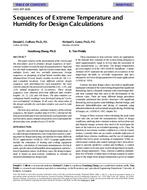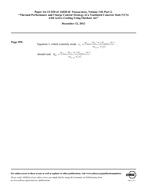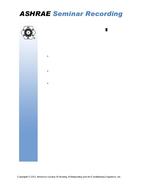The “metal building” or “pre-engineered building” of today accounts for over 50% of all low-rise construction and encompasses a highly sophisticated and sometimes complex method of construction. A diverse offering of roof and wall systems is available for building uses ranging from simple warehouses and factories through complex commercial and office structures, including multistory. These roofs and walls can contain a variety of thermal bridges or other thermal anomalies. Insulation is often compressed over secondary structural members, fasteners or connectors can present a through-metal path, factory-assembled panels may have complex joints, and many other thermal “weaknesses” can be observed.
This paper deals with some of the complexities of these thermal anomalies and the difficulty in reliably calculating the apparent thermal transmittance. Further discussion will describe the extensive test work that has been conducted on this type of construction in a large guarded hot box per ASTM C 236-80. Experience and correlation with other testing laboratories has ensured the accuracy of the test method and has shown that calculations can grossly overstate thermal performance.
Units: Dual
Citation: Symposium, ASHRAE Transactions, 1986, vol. 92, pt. 2B, Portland, OR
Product Details
- Published:
- 1986
- Number of Pages:
- 7
- File Size:
- 1 file , 910 KB
- Product Code(s):
- D-PO-86-12-4


